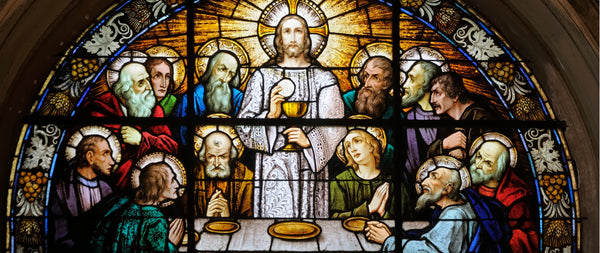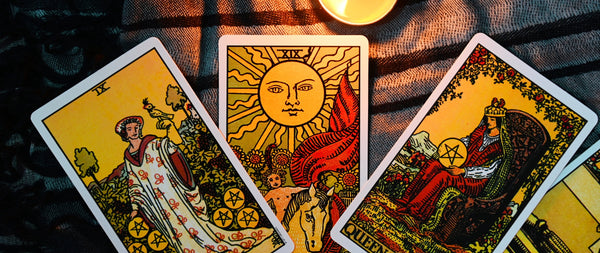Traveling back through the corridors of time to the ancient world, we encounter a rich tapestry woven with the threads of spiritual practices that have shaped our modern understanding of the mind, body, and soul.
From age-old rituals to the sharing of beliefs, the influence of the past on our present exploration of the mind-body connection in spiritual practices is both fascinating and deeply insightful.

Spiritual Influences on Early Christianity
Early Christian practices were heavily influenced by old spiritual practices, beliefs and rituals. Compelling evidence suggests that many of the fundamental beliefs and practices within modern Christianity did not originate from divine sources such as God or Jesus Christ.
Rather, they find their roots in the influence of human thought intertwined with pagan and other spiritual practices and religious customs. Early Christians appear to have drawn inspiration from a mix of pagan, Roman and Greek ideologies, as well as elements from Gods and Goddesses from Hinduism, Buddhism, and other belief systems.
Jesus was a divine-human, and similar ideas of man-gods were prevalent in ancient Egyptian beliefs, where Pharaohs were revered as divine figures, sometimes even sacrificed for the greater good of society.
The concept of the Holy Trinity, often associated with Christianity, is not exclusive to it. Many ancient religions, including those in Egypt, Greece, and India, held beliefs in triune divinities. Trinities were part of various belief systems during the time of Jesus Christ. This familiarity made it easier for pagans, and eventual early Christians, to accept as it was already an understood belief.
The Christian belief in the resurrection of a divine figure who saves their followers finds parallels in pagan religions whose gods and goddesses were resurrected for the benefit of their people. For example, ancient Egyptians worshipped a trinity of gods and goddesses—Horus, Isis, and Osiris—long before modern Christianity emerged. Similar triads of deities existed in Greco-Roman, Babylonian, Zoroastrian, and Hindu traditions.
Turning to Mithraism, Persians considered Mithra a mediator between God and humanity, born of a virgin on December 25th, who ultimately sacrificed himself for the salvation of mankind. This closely resembles Christian concepts of a savior. Mithra's festivals, observed during the Winter Solstice and the Vernal Equinox, coincide with Christian celebrations of Christmas and Easter, further highlighting the influence of pagan religions on Christianity.
That appears to be why December 25th, traditionally celebrated as the birth of Jesus Christ, is not mentioned in the original teachings of Jesus and likely corresponds with the pagan celebrations of the Winter Solstice when the "sun is born." Christ's actual birthdate remains unknown, with some suggesting an early spring date based on biblical references.
Even customs associated with modern Christian holidays, such as the Christmas tree, its decorations, and Santa Claus, find their origins in pagan beliefs. Easter, too, derives from a pagan spring festival dedicated to the Anglo-Saxon goddess Eostre, symbolizing light and spring.

Tarot Cards and the History of Fortune Telling
The origins of tarot cards can be traced back to the period between 1440 and 1450 in various northern Italian cities. These early tarot decks were primarily created for use in card games, and the association of fortune-telling with tarot did not become prominent until the 19th century.
In their early days, tarot card games were described as "trick-taking" games or referred to as "tarocchini." These games featured a unique set of cards, including not only the standard suit cards like cups, swords, batons, or coins but also distinctive cards like the fool, emperor, and Pope, which added an intriguing dimension to the gameplay.
The transition of tarot cards from gaming to the realm of the occult and spiritual practice is believed to have taken place in France. Each tarot card was assigned meaning based on its image, number, and suit. Additionally, the orientation of the card, whether it was upright or reversed, and its position within a card spread or deck held significance in interpreting their messages.
The popularity of tarot card readings has surged in recent times, thanks in large part to online communities and the ease of sharing information in the digital age. Tarot, as a divination and spiritual practice, has experienced a resurgence, captivating individuals seeking insights into their lives and seeking a deeper connection with the mystical.
However, it was during the 19th century that tarot as we know it today truly began to take shape, with the creation of the iconic Rider-Waite tarot card deck. This deck has become one of the most widely used and recognizable tarot decks still available for purchase today. Its distinctive imagery and symbolism have played a significant role in shaping the modern interpretation and usage of tarot cards.
As tarot continues to captivate the curiosity of people around the world, it serves as a fascinating blend of history, symbolism, and spirituality, offering guidance and introspection to those who seek its wisdom. Its enduring appeal in the digital age highlights the timeless fascination with the mysterious and the quest for self-discovery.

Spiritual Leadership Throughout History
Throughout history, there have been numerous illustrious spiritual leaders whose wisdom and teachings continue to hold significance in contemporary society. In our current era, the advent of advanced information-sharing platforms, particularly the rise of social media, has paved the way for a new generation of spiritual leaders who, while perhaps not as historically renowned, nonetheless play pivotal roles in guiding individuals on their spiritual journeys.
Among the pantheon of esteemed spiritual figures, luminaries such as Mother Teresa, the Dalai Lama, Pope Innocent II, and Martin Luther stand as enduring beacons of spiritual wisdom. Their contributions to the world of spirituality have left indelible marks on humanity, offering profound insights into matters of faith, compassion, and human connection. Their teachings and actions have transcended time, resonating with generations of seekers.
In addition to these historical figures, the modern landscape of spiritual leadership has witnessed the emergence of contemporary luminaries such as Eckhart Tolle, Deepak Chopra, Desmond Tutu, Rhonda Byrne, and many others. These individuals carry forward the torch of spiritual guidance into the digital age, addressing the unique challenges and opportunities of the modern world.
What sets modern spiritual leaders apart is their ability to harness the power of technology to disseminate their messages. Unlike their historical counterparts, who relied on parchment scrolls and oral traditions to convey their teachings, modern spiritual leaders have the distinct advantage of leveraging global communication networks to share their insights instantly and on a worldwide scale. Through social media, podcasts, webinars, and other digital platforms, they can connect with individuals from diverse backgrounds, offering guidance, solace, and enlightenment in real-time.
Furthermore, technology has enabled modern spiritual leaders to archive and preserve their teachings for posterity. Digital libraries, online repositories, and multimedia platforms allow for the permanent storage and accessibility of their invaluable wisdom. This ensures that their insights remain readily available to future generations, fostering a lasting legacy of spiritual enlightenment.
In this age of rapid information exchange, both historical and modern spiritual leaders continue to shape our understanding of spirituality, compassion, and the human condition. Their enduring influence serves as a testament to the enduring thirst for spiritual guidance in an ever-evolving world.
Conclusion
In conclusion, history is a living force that's shaped how we view spirituality today. It's clear that the past has a huge impact on how we connect with our spiritual side in the here and now. The lessons, traditions, and practices from days gone by still guide us on our path.
Sources
Husband, T. (2016) Before fortune-telling: The history and structure of tarot cards, The Metropolitan Museum of Art. Available at: https://www.metmuseum.org/blogs/in-season/2016/tarot#:~:text=The%20earliest%20references%20to%20tarot,evolving%20earlier%20in%20the%20century
(n.d.) Chapter 2: Ancient pagan influences | Islam and Christianity, a ... Available at: https://www.al-islam.org/islam-and-christianity-comparative-study-muhammad-ali-zenjibari/chapter-2-ancient-pagan-influences





